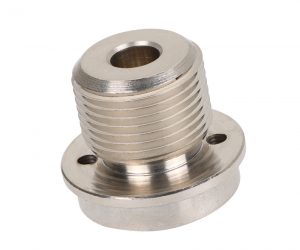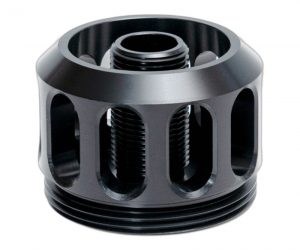"Micro Gears, Macro Impact" explores the fascinating realm of tiny plastic gears and demonstrates their unexpectedly significant impact on contemporary industry and technology. Everything from the intricate robotics pushing the limits of innovation to the timepieces that punctuate our daily lives is powered by these humble parts. This book offers a useful manual for their design, production, and use in addition to an examination of their historical evolution. Whether you are a student, engineer, or enthusiast, this work will help you better understand these crucial but frequently disregarded components of modern machinery.
Chapter 1: The Evolution of Miniature Gears
From Ancient Civilizations to Modern Micro Gears
The story of miniature gears is not just one of incremental progress, but of cross-cultural ingenuity that spans millennia. Long before the advent of modern engineering, ancient civilizations were already experimenting with gear mechanisms. The Greek Antikythera mechanism, the Chinese south-pointing chariot, and the sophisticated clockwork of medieval Europe were early milestones in the quest to control and manipulate motion. These devices, though created in isolation, exhibit remarkably similar principles of mechanical design, foreshadowing the precise miniature gears we know today.
Milestones in Miniature Gear Technology
As time passed, the development of miniature gears followed a remarkable trajectory. The Industrial Revolution marked a key turning point, as mass production and the rise of mechanized manufacturing techniques enabled greater precision and efficiency in gear production. With the advent of computer-aided design (CAD) and computer numerical control (CNC) machining, gear design became more intricate, and the scale of production expanded exponentially. This chapter takes readers through these pivotal breakthroughs, highlighting how technological advances continue to reshape the miniature gear industry.
Chapter 2: Design Ingenuity
Principles of Miniature Gear Design
The design of miniature gears is a highly specialized craft that blends precision, optimization, and deep technical expertise. This chapter explores the core principles that govern the creation of these intricate components, from selecting the ideal gear geometry to balancing material strength and durability. It also covers tolerance requirements—how minute variations in size or shape can make the difference between smooth, reliable operation and catastrophic failure. The precision required in every design decision underscores the importance of understanding the relationship between a gear’s form and its function.
Advancements in CAD and CAM for Precision Gears
The integration of computer-aided design (CAD) and computer-aided manufacturing (CAM) technologies has revolutionized the production of miniature gears, making it possible to create designs with unprecedented complexity and accuracy. This section takes a closer look at how these digital tools enable engineers to push the boundaries of gear design, producing highly customized and intricate solutions that were once inconceivable. Through a seamless workflow between design and manufacturing, CAD/CAM has accelerated innovation and increased the efficiency of gear production processes.
Chapter 3: Manufacturing Marvels
Techniques for Producing Miniature Plastic Gears
The manufacturing of miniature plastic gears is a fascinating field that blends traditional craftsmanship with modern technology. In this chapter, we examine the wide range of production techniques, from precision machining and injection molding to cutting-edge additive manufacturing (3D printing). Each of these methods offers distinct advantages and challenges, and understanding the right approach for a given application is key to achieving optimal performance.
Ensuring Quality and Consistency in Miniature Gear Production
In miniature gear production, even the smallest flaw can have significant consequences. Thus, ensuring quality and consistency is paramount. This section covers the rigorous quality control protocols used to ensure that every gear meets the precise standards required for high-performance applications. From advanced metrology tools to automated inspection systems, discover how manufacturers uphold the highest standards in gear production, guaranteeing that each component performs flawlessly in its intended role.
Chapter 4: Material Matters
Choices and Challenges in Gear Materials
The material selection process for miniature gears is a balancing act between performance, durability, and environmental considerations. Engineers must carefully choose materials that can withstand the stresses of high-speed rotations, temperature variations, and chemical exposure. This chapter explores the most common materials used in miniature gear production—such as engineering plastics, metal alloys, and composites—highlighting their respective strengths and limitations. The complexities of material choices reveal why a deep understanding of material science is critical in the design and manufacturing of miniature gears.
Performance and Durability in Miniature Gears
Miniature gears often operate under extreme conditions, which places unique demands on their performance. This section explores how manufacturers address challenges related to wear, fatigue, and temperature extremes to ensure long-lasting functionality. Innovations in material science, coatings, and lubrication are discussed, offering a glimpse into how these tiny components are engineered to thrive in high-performance, high-stress environments.
Chapter 5: Application Alley
Diverse Uses of Miniature Plastic Gears in Industry and Daily Life
The versatility of miniature plastic gears is nothing short of astounding. These compact components are found in everything from wristwatches and calculators to the most advanced robots and aerospace systems. This chapter highlights the broad range of industries that rely on miniature gears, providing a window into the incredible variety of applications they support. Their ability to perform precise, reliable, and often life-critical functions demonstrates just how integral they have become to modern technology.
Cutting-edge Innovations Featuring Miniature Gears
Miniature gears are playing a central role in some of today’s most cutting-edge technologies. From the miniature actuators in prosthetic devices to the microfluidic systems revolutionizing diagnostics, these tiny components are integral to groundbreaking innovations. This section explores how the miniature gear industry continues to evolve, driving the development of futuristic applications that challenge the boundaries of what’s possible.
Chapter 6: Integrating Miniature Gears into Designs
Guidelines for Incorporating Miniature Gears in Projects
The integration of miniature gears into larger mechanical systems is an art in itself. This chapter offers a comprehensive guide for engineers and designers, covering key considerations such as gear selection, alignment, mounting, and lubrication. Understanding how to incorporate these tiny components into complex systems is crucial for ensuring that they function as intended, providing reliable and efficient performance.
Troubleshooting and Optimization Strategies
Even the best-designed gears can encounter problems. This section provides practical troubleshooting advice for addressing common issues like gear wear, misalignment, and noise. By learning how to identify and resolve these challenges, engineers can optimize the performance and lifespan of miniature gear-driven systems, ensuring their reliability in demanding applications.
Chapter 7: Sustainability and the Future
Environmental Considerations in Plastic Gear Production
As the world increasingly focuses on sustainability, the miniature gear industry faces growing pressure to reduce its environmental footprint. This chapter explores the steps being taken to address these concerns, from the development of recyclable and eco-friendly materials to more energy-efficient production methods. We also examine the potential of closed-loop manufacturing systems that aim to reduce waste and maximize resource efficiency.
The Future of Miniature Gears in Emerging Technologies
Miniature gears are poised to play a transformative role in emerging technologies. From smart sensors and digital feedback systems to the ongoing advances in additive manufacturing, the future of miniature gears looks brighter than ever. This section provides a glimpse into how these components will continue to drive innovation in fields as diverse as robotics, biotechnology, and nanotechnology.
Conclusion: Maximizing the Miniature for Innovation and Efficiency
"Micro Gears, Macro Impact" has illuminated the significant role that miniature plastic gears play in modern technology, showcasing how these tiny components are critical to the function of everything from everyday gadgets to groundbreaking innovations. Their evolution, from ancient mechanisms to modern marvels, reflects both the ingenuity and the relentless pursuit of precision that defines engineering excellence.
As technological advancements continue to push the boundaries of possibility, the importance of miniature plastic gears will only increase. By equipping readers with a deeper understanding of their design, manufacturing, and application, this book has set the stage for the next generation of engineers to harness the power of the miniature, unlocking new opportunities for innovation that will shape the future of our world.

